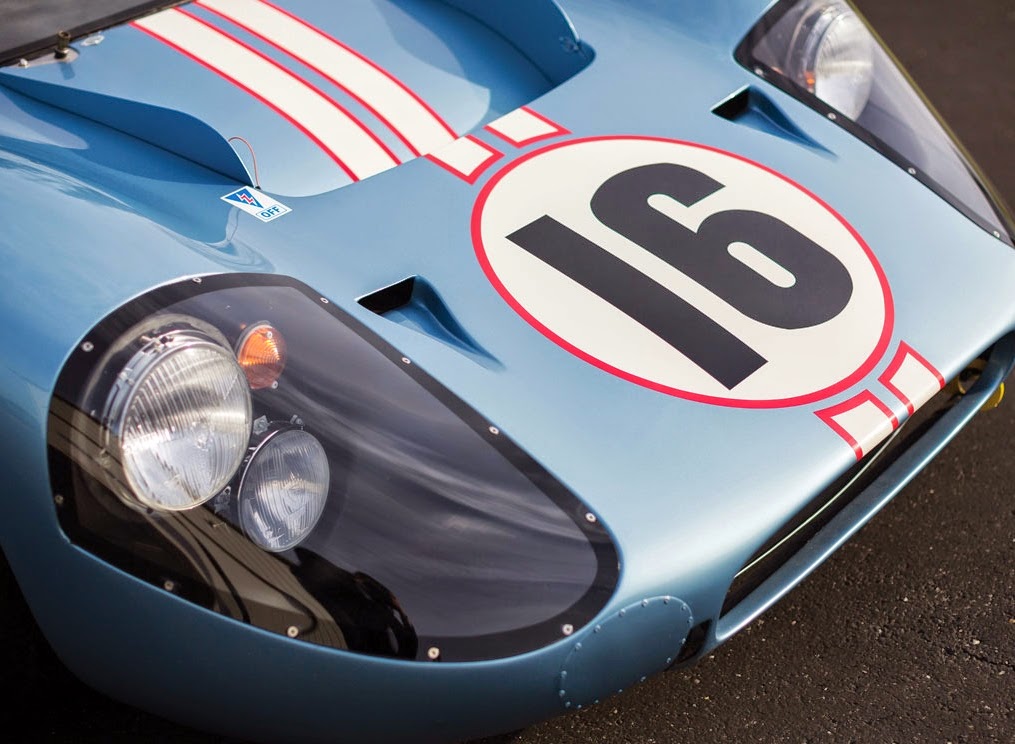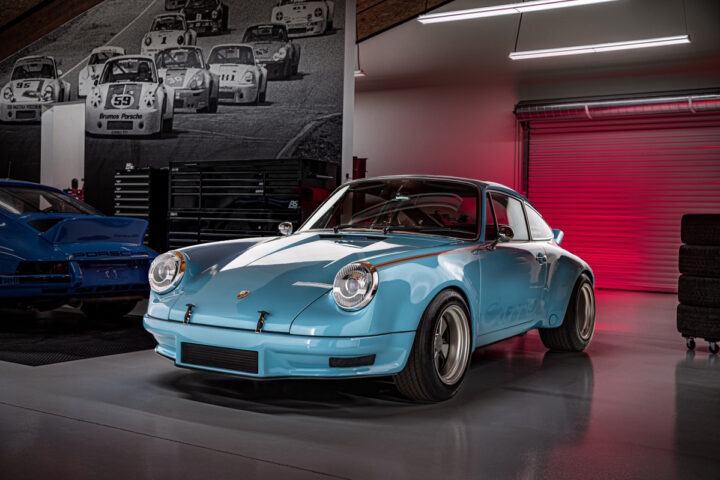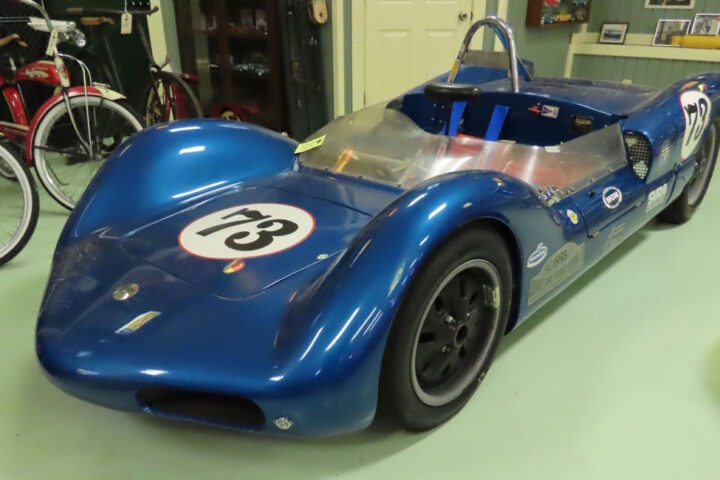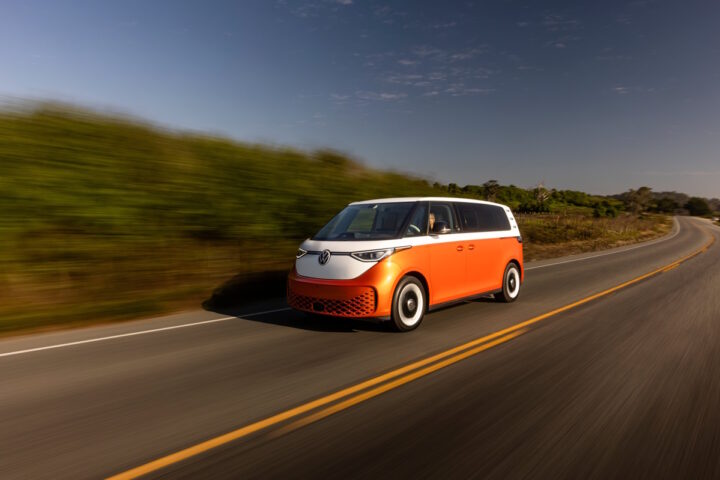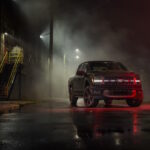TGR Staff
Ford only built 12 GT40 Mk IVs, but the team at Kar Kraft is building a limited run of 7 continuation cars that are legal to race in HSR and SCRA and it comes with an FIA Historic Technical Passport for competition in Europe. This the price of original GT40’s in the stratosphere these continuation cars are becoming more common at the historic races, not that this car is going to be a price of an Aztec GT, but it still significantly less than a real GT40 if you are looking for a car for the track. This car is offered next January at the RM Auctions Phoenix Sale Click HERE for the official listing.
Official Catalog Description:
500 bhp, 427 cu. in. V-8 engine with dual four-barrel Holley carburetors, model T-44 four-speed manual transaxle, front and rear independent suspension with coil springs and shock absorbers, and four-wheel ventilated disc brakes. Wheelbase: 95 in.
The fourth of only seven continuation Mk IV GT40s
A faithful recreation of one of the most important American cars ever built
Perhaps the most significant post-war American racecar ever produced was Ford’s Mk IV GT40, and it is nothing short of a racing legend. It was the ultimate development of the GT40 platform, and it took the fight straight to Ferrari, dominating a field that included the Ferrari 330 PF and the Chaparral 2F, as well as its predecessors, the GT40 Mk I and Mk IIB.
As history would reveal, the Mk IV would only be campaigned in two races, at the 1967 12 Hours of Sebring, where Mario Andretti and Bruce McLaren piloted an Mk IV to victory, and at the 1967 24 Hours of Le Mans, where Dan Gurney and A.J. Foyt outperformed all to the checkered flag and won the Index of Performance for the most efficient car. That victory is the only all-American outright win of an American-built chassis, engine, team, and drivers at the fabled Le Mans 24-hour endurance race. Due to the Mk IV’s unparalleled performance, the FIA quickly relegated the Mk IV to racing extinction by outlawing any prototype car that had larger than three-liter motors.
As only 12 original chassis were built, with 10 surviving, the existing original Mk IV GT40s are prized possessions of their caretakers; they seldom change hands, and they are rarely seen or heard in action. Such is the case with the most desirable cars in the world, as there are not enough original examples available for purchase by enthusiasts. To help bring the look, feel, sound, and performance of this famous car to a few fortunate individuals, and through them reach a greater audience and future generations, Mike Teske, the managing director of Kar-Kraft LLC, gathered a team that is considered by many to be the best in the industry to recreate the car. To achieve the level of detail these cars exhibit required access to information gathered over 40 years of research and support.
As such, advice and documentation (including a set of original Kar-Kraft engineering drawings) was gathered from many involved in the original Mk IV program, such as Carroll Shelby, Edsel Ford II, Dan Gurney, Carroll Smith, Phil Remington, Roy Lunn, Chuck Mountain, Ed Hull, Homer Perry, Ray Geddes, and many more. The Kar-Kraft team also included Ken Thompson, a fabricator at Holman and Moody’s shops in the 1960s, when the Mk IVs campaigned, and a recipient of NASCAR’s Fabricator of the Year award not once but twice. The construction process spanned eight years to achieve the result presented here. Make no mistake, these cars were built as mirror images of the originals, as they were constructed with a honeycomb-aluminum riveted and bonded chassis and fitted with fiberglass bodywork. Each car was graced with a 427-cubic inch V-8 that was capable of producing 500 horsepower, just like the originals.
The Kar-Kraft Mk IVs have received worldwide recognition and acceptance wherever they have been displayed. Ford of France displayed a Kar-Kraft Mk IV on and off the track during the 2012 Le Mans Classic race. The highest compliment possible came from the very group that originally outlawed the Mk IV, the FIA, which has accepted these cars to compete alongside the originals. To quote the fourth edition of the World Registry of Cobras and GT40s, “These cars are more than just steel-chassised cars that look like the original Mk IVs. They are, in all respects, exact duplicates of the originals. They are constructed to the same specifications and use the same techniques as the originals.”
Chassis J-16 was finished in Princess Blue with white stripes and red and blue accents, in tribute to Shelby’s early Cobras, and it also retained roundels on the nose and doors and dual racing stripes, which were similar to the Mk IVs that competed at Le Mans in 1967, J-5 and J-6. It completed construction in the final days of 2010, alongside the other Kar Kraft Mk IV GT40s, and it was built for Joe Henderson, of Ashville, North Carolina. It is the fourth of seven continuation cars built, and it is the sole example finished in this particular livery. Chassis J-16 is faithfully equipped with a dual-quad, dual-plane, 427-cubic inch tunnel-port V-8 that is capable of producing 500 horsepower and provides rotation force through the magnesium-cased T-44 transaxle, which was designed specifically for the GT program. The car was entered in just one vintage race, to work out any potential issues, and it is legal to race in HSR and SCRA events. It also comes with an FIA Historic Technical Passport for competition in Europe.
It goes without saying that the Mk IV GT40 is one of the most historically important motor cars ever built. With a pair of wins at two of the world’s most important endurance races, it is nothing short of a motorsports icon, and it symbolizes a high point in American motorsport history. Thanks to an unprecedented level of effort, the Kar Kraft continuation Mk IVs are mechanically equivalent to the originals in every fashion and thus provide an unparalleled equivalent driving experience for significantly less investment. Chassis J-16 is an exceptional example of the breed. It is ready to be enjoyed in shows, and with professional preparation, it will be ready for vintage racing.

